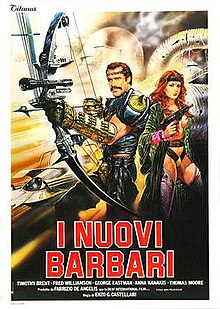
George Miller is an Australian filmmaker best known for his Mad Max franchise, whose second installment, Mad Max 2, and fourth, Fury Road, have been hailed as two of the greatest action films of all time, with Fury Road winning six Academy Awards. Miller is very diverse in genre and style as he also directed the biographical medical drama Lorenzo's Oil, the dark fantasy The Witches of Eastwick, the Academy Award-winning animated film Happy Feet, produced the family-friendly fantasy adventure Babe and directed the sequel Babe: Pig in the City.
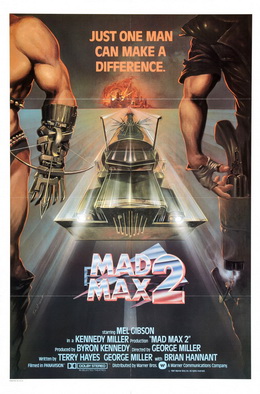
Mad Max 2 is a 1981 Australian post-apocalyptic dystopian action film directed by George Miller. It is the second installment in the Mad Max franchise, with Mel Gibson reprising his role as "Mad" Max Rockatansky. The film's tale of a community of settlers moved to defend themselves against a roving band of marauders follows an archetypical "Western" frontier movie motif, as does Max's role as a hardened man whose decision to assist the settlers helps him rediscover his humanity. Filming took place in locations around Broken Hill, in the Outback of New South Wales.
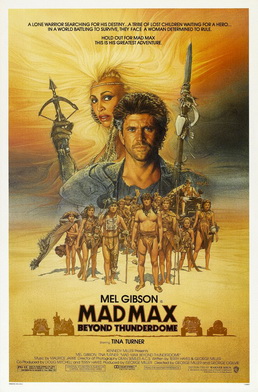
Mad Max Beyond Thunderdome is a 1985 Australian post-apocalyptic dystopian action film directed by George Miller and George Ogilvie and written by Miller and Terry Hayes. It stars Mel Gibson and Tina Turner in a story of a lone roving warrior who is exiled into the desert, and there encounters an isolated child cargo cult, centered on a crashed Boeing 747 and its deceased captain.

George Eastman is an Italian actor and screenwriter well known for his frequent collaborations with notorious director Joe D'Amato. He is most famous for his role as the insane, cannibalistic serial killer Klaus Wortmann in the gory 1980 horror film Antropophagus. He also played a similar role in its 1981 follow-up, Absurd. Both films were directed by D'Amato and written by Eastman.

Max Rockatansky is the title character and antihero protagonist of the Australian post-apocalyptic action film series Mad Max. Created by director George Miller and producer Byron Kennedy, the character was originally played by actor Mel Gibson in the first three films from 1979 to 1985, and later Tom Hardy in the fourth in 2015.

Endgame (Bronx lotta finale) (transl. Endgame: Bronx Final Battle) is a 1983 Italian post-apocalyptic film starring Al Cliver, Laura Gemser and George Eastman. It was directed, co-written and produced by Joe D'Amato, under the pseudonym "Steven Benson".
Kjell Nilsson is a Swedish olympic-class weight lifter and actor. His best known role is his 1981 portrayal of "The Humungus," the leader of the marauding wasteland gang in Mad Max 2.
Giovanni Frezza is an Italian former child actor, diver, martial artist and product developer who appeared in a number of films throughout the 1980s. Frezza is possibly best recalled for his roles in several horror films.
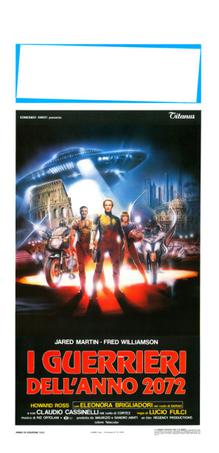
Warriors of the Year 2072 is a 1984 Italian science fiction film directed by Lucio Fulci. The film is set in the 21st century, where Romans have found a new way to handle criminals: by having them fight each other like gladiators on motorcycles on national television. The film was based on a trend of Italian cinema to develop stories of futuristic barbarians after the popularity of the films Mad Max and Escape from New York.
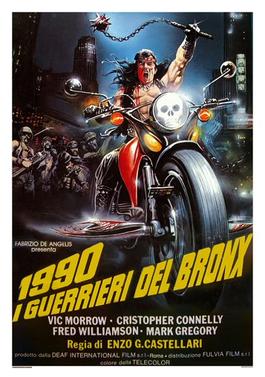
1990: The Bronx Warriors is a 1982 Italian action-science fiction film directed by Enzo G. Castellari.

Escape from the Bronx, also known as Bronx Warriors 2 in the United Kingdom and Escape 2000, is a 1983 Italian action film directed by Enzo G. Castellari. It was featured on Mystery Science Theater 3000 under its Escape 2000 name. It is a sequel to 1990: The Bronx Warriors.

Mad Max is an Australian post-apocalyptic and dystopian action film series and media franchise created by George Miller and Byron Kennedy. It began in 1979 with Mad Max, and was followed by three sequels: Mad Max 2, Mad Max Beyond Thunderdome (1985) and Mad Max: Fury Road (2015); Miller directed or co-directed all four films. Mel Gibson portrayed the titular character Max Rockatansky in the first three films, while Tom Hardy portrayed the character in Mad Max: Fury Road.

Battletruck is a 1982 New Zealand post-apocalyptic science fiction action film co-written and directed by Harley Cokliss and starring Michael Beck, Annie McEnroe, James Wainwright, John Ratzenberger, and Bruno Lawrence.

The Loves and Times of Scaramouche is a 1976 comedy film directed by Enzo G. Castellari.

Colpi di luce is a 1985 Italian science-fiction action film directed by Enzo G. Castellari. It stars Erik Estrada alongside Peggy Rowe, whom he would soon marry in Rome.
The vigilante film is a film genre in which the protagonist or protagonists engage in vigilante behavior, taking the law into their own hands. Vigilante films are usually revenge films in which the legal system fails protagonists, leading them to become vigilantes. The vigilante film has in recent years often crossed over with the superhero genre, due to character origin stories frequently involving an injustice having been committed against them.
Fabrizio De Angelis is an Italian director, screenwriter and producer.

Stryker is a Philippine action film directed by Cirio H. Santiago. The film is set in the future where after a nuclear holocaust, survivors battle each other over the remaining water in the world.
2020 Texas Gladiators is a 1983 Italian science fiction action film co-directed by Joe D'Amato and George Eastman.
